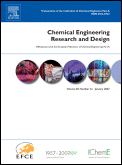
CHEMICAL ENGINEERING RESEARCH & DESIGN
Scope & Guideline
Innovating Solutions, Designing the Future.
Introduction
Aims and Scopes
- Process Design and Optimization:
Focuses on methodologies for optimizing chemical processes, including the design of reactors, separation units, and integrated systems, with a strong emphasis on sustainability and energy efficiency. - Advanced Materials and Membrane Technology:
Explores the synthesis and application of novel materials, particularly membranes for separation processes, with a focus on enhancing performance and reducing fouling. - Modeling and Simulation:
Emphasizes the development and application of computational models to predict the behavior of chemical processes, facilitating better design and operational strategies. - Environmental Engineering and Waste Management:
Addresses the treatment and management of industrial waste, including the recovery of valuable resources and the development of sustainable technologies for pollution control. - Biochemical Engineering and Biotechnology:
Investigates the use of biological systems and processes for the production of chemicals, biofuels, and pharmaceuticals, focusing on optimizing yields and process efficiency. - Nanotechnology and Advanced Characterization Techniques:
Involves the use of nanostructured materials and advanced characterization techniques to enhance chemical processes and product quality. - Energy Systems and Thermodynamics:
Covers the integration of energy systems within chemical processes, focusing on thermodynamic analysis and optimization for improved energy efficiency.
Trending and Emerging
- Sustainable Chemical Processes:
An increasing focus on sustainability, including the development of green chemistry practices and processes that minimize environmental impact and resource consumption. - Machine Learning and AI Applications:
The use of machine learning and artificial intelligence in optimizing chemical processes and predictive modeling is gaining traction, reflecting a broader trend towards data-driven decision-making in engineering. - Electrochemical Processes:
Research on electrochemical methods for carbon capture, energy storage, and conversion processes is emerging, driven by the need for cleaner energy solutions. - Advanced Characterization Methods:
There is a growing interest in advanced characterization techniques, such as in-situ imaging and spectroscopy, to better understand chemical processes at the molecular level. - Integration of Renewable Energy Sources:
The integration of renewable energy systems within chemical processes, particularly in the context of hydrogen production and carbon capture, is becoming a prominent research area. - Biotechnology and Synthetic Biology:
Research at the intersection of chemical engineering and biotechnology, especially relating to the production of bio-based chemicals and materials, is on the rise. - Nanotechnology in Chemical Engineering:
The application of nanotechnology to enhance materials and processes, including catalysis and separation technologies, is increasingly prevalent.
Declining or Waning
- Traditional Separation Processes:
There has been a noticeable decrease in research focused solely on conventional separation techniques such as distillation, as newer methods and technologies (e.g., membrane separations) gain prominence. - Basic Chemical Reaction Kinetics:
While foundational studies are still important, there is less emphasis on purely theoretical kinetic models without integration into broader process applications or innovative methodologies. - Conventional Waste Treatment Methods:
Research on traditional waste treatment processes is declining in favor of more sustainable and innovative approaches, such as bioremediation and advanced oxidation processes. - Single-Use Technologies in Bioprocessing:
The focus on single-use technologies in bioprocessing is waning as the industry shifts towards more sustainable and reusable options. - Static Modeling Techniques:
There is a trend away from static modeling approaches towards more dynamic and data-driven models that account for real-time process variations.
Similar Journals

CHEMICAL AND BIOCHEMICAL ENGINEERING QUARTERLY
Unlocking Potential Through Open Access ResearchCHEMICAL AND BIOCHEMICAL ENGINEERING QUARTERLY, published by the Croatian Society of Chemical Engineering Technology, is a distinguished open-access journal that has been providing a platform for the dissemination of innovative research since its inception in 1987. With a focus on the fields of biochemistry and chemical engineering, this quarterly journal addresses a wide array of topics, including process chemistry and technology, making significant contributions to both academia and industry. Despite its current positioning in the Q4 category for biochemistry and Q3 for miscellaneous chemistry and process chemistry in 2023, the journal continues to strive for greater impact, catering to researchers, professionals, and students alike. Its open-access model, in place since 2001, ensures that cutting-edge research is accessible to a broad audience, fostering collaboration and knowledge sharing within the scientific community. By promoting high-quality research and providing insights into the latest advancements, Chemical and Biochemical Engineering Quarterly remains an essential resource for those involved in the chemical and biochemical engineering disciplines.

KOREAN JOURNAL OF CHEMICAL ENGINEERING
Driving Innovation Through Rigorous Research.The Korean Journal of Chemical Engineering is a prestigious publication by the Korean Institute of Chemical Engineers, dedicated to advancing the field of chemical engineering and its associated sciences. Established in 1984, this journal has made significant contributions to the dissemination of innovative research, covering a broad spectrum of topics within chemical engineering and general chemistry. With a current impact factor placing it in the Q2 quartile within both the chemical engineering and chemistry categories, it is recognized for its rigorous peer-review process and high-quality articles. The journal provides a valuable platform for researchers, professionals, and students to share their findings and collaborate on emerging methodologies and technologies. Although it does not offer open access options, its broad international readership, bolstered by its Scopus rankings — including a commendable #108 in general chemical engineering — ensures widespread visibility and dissemination of published works. As it approaches its 40th anniversary in 2024, the Korean Journal of Chemical Engineering continues to be an essential resource for anyone engaged in the field, driving innovation and academic dialogue worldwide.

CHEMICAL AND PETROLEUM ENGINEERING
Catalyzing Knowledge in the Energy SectorChemical and Petroleum Engineering is a prestigious academic journal dedicated to the advancement of knowledge in the fields of chemical engineering and petroleum technologies. Published by Springer, this journal serves as a vital resource for researchers, professionals, and students interested in the intricate processes and innovations that drive these industries. With an ISSN of 0009-2355 and an E-ISSN of 1573-8329, it has established a notable presence since its inception in 1965. Throughout its converged years, the journal has continually published impactful research that contributes to sustainability and efficiency within the sectors. Although it holds a Q3 ranking in Chemical Engineering and Fuel Technology and a Q4 ranking in Energy Engineering and Geochemistry, it is a noteworthy platform for emerging studies, fostering connections among scholars. Readers will find a wealth of information and ideas, but please note that this journal does not currently offer open access options. For those passionate about chemical and petroleum engineering, this journal is an essential part of staying informed and engaged with the latest scientific advancements.

JOURNAL OF CHEMICAL ENGINEERING OF JAPAN
Bridging Tradition and Innovation in Chemical EngineeringJOURNAL OF CHEMICAL ENGINEERING OF JAPAN is a distinguished academic publication in the field of chemical engineering and chemistry, published by Taylor & Francis Ltd. With its ISSN 0021-9592 and E-ISSN 1881-1299, this journal has been a vital resource for researchers and practitioners since its inception in 1968 and continues to provide essential insights and advancements through 2024. The journal operates under an Open Access model as of 2023, promoting wider dissemination of research findings and encouraging collaboration within the global scientific community. Currently categorized in the Q4 quartile for both Chemical Engineering and Chemistry (miscellaneous) in 2023, it ranks within the lower percentiles of its respective fields, offering a platform for emerging scholars to publish their work and gain visibility. As part of Japan's academic landscape, it addresses numerous aspects of chemical engineering, fostering innovation and technical development that contribute to the industry's growth. Engaging with this journal is paramount for those looking to stay informed on the latest research trends and applications in chemical processes.
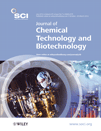
JOURNAL OF CHEMICAL TECHNOLOGY AND BIOTECHNOLOGY
Exploring the Synergy Between Chemistry and BiotechnologyJOURNAL OF CHEMICAL TECHNOLOGY AND BIOTECHNOLOGY, published by WILEY in the United Kingdom, serves as a premier platform for research at the interface of chemical engineering and biotechnology. With an ISSN of 0268-2575 and E-ISSN 1097-4660, this journal has established itself as a crucial resource for scholars and professionals, evidenced by its impactful categorization in the Q1 and Q2 quartiles across multiple domains such as Inorganic Chemistry, Biotechnology, and Renewable Energy. The journal encompasses a broad scope that includes innovative research on sustainable technologies, pollution management, and advances in chemical syntheses, making it essential for those pursuing cutting-edge developments in these disciplines. Researchers and practitioners benefit from its comprehensive coverage, as it includes insightful articles, reviews, and case studies that collectively push the boundaries of contemporary science and engineering. With a ranking of Q2 in its various categories and significant percentiles in key fields, the journal stands as a beacon for high-quality scholarship, eligible for impact in both academia and industry.

Hemijska Industrija
Innovating Chemistry: Bridging Research and ApplicationHemijska Industrija, an esteemed journal published by the Association of Chemical Engineers of Serbia, serves as a critical platform for advancing knowledge in the fields of chemical engineering and chemistry since its inception in 1989. With an Open Access policy adopted in 2017, the journal provides global access to cutting-edge research and innovative findings, enhancing visibility for authors and fostering collaboration among researchers, professionals, and students alike. This peer-reviewed journal currently holds a Q3 ranking in both Chemical Engineering (miscellaneous) and Chemistry (miscellaneous) categories, signifying its growing impact in these fields. Published in Belgrade, Serbia, Hemijska Industrija not only disseminates high-quality articles from various disciplines within chemical science but also emphasizes interdisciplinary approaches and practical applications, making it an invaluable resource for anyone seeking to stay at the forefront of chemical innovations.

REVIEWS IN CHEMICAL ENGINEERING
Driving Excellence in Chemical Engineering Research.REVIEWS IN CHEMICAL ENGINEERING, published by Walter de Gruyter GmbH, is a premier journal that delivers cutting-edge insights and comprehensive reviews in the field of chemical engineering. Established as an eminent resource since 1982, this journal is committed to advancing knowledge and fostering innovation in various domains of chemical engineering, including process design, materials, and environmental considerations. With an impressive Q1 ranking in the 2023 Scopus category for Chemical Engineering and a commendable 20th position out of 273 journals, it is recognized for its rigorous peer-review process and high-impact contributions. Although it operates under a subscription model, the journal remains a vital platform for researchers and professionals aiming to stay at the forefront of technological advancements and scholarly discourse in chemical engineering. With a focus on interdisciplinary applications and real-world relevance, REVIEWS IN CHEMICAL ENGINEERING is an indispensable resource for academics, industry professionals, and students dedicated to excellence in this field.
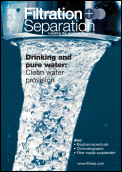
Filtration + Separation
Connecting Academia with Industry for Environmental ProgressFiltration + Separation is a distinguished journal published by MA HEALTHCARE LTD, specializing in the fields of filtration technology, separation processes, and their applications within environmental science and industrial engineering. With a commitment to advancing knowledge in these critical areas, this journal, established in 1970, has consistently provided a platform for innovative research and developments, catering to the unique challenges of the filtration and separation industry. Despite its recent categorization in the Q4 quartile across various fields, including Environmental Science and Industrial Engineering, it remains pivotal for researchers and professionals seeking to stay abreast of emerging trends and technologies. The journal is accessible through traditional subscription models and aims to bridge the gap between academic research and practical applications. As the industry evolves, Filtration + Separation continues to serve as an invaluable resource for both seasoned experts and budding scholars passionate about enhancing separation processes and environmental sustainability.
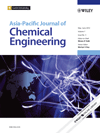
Asia-Pacific Journal of Chemical Engineering
Connecting Ideas, Advancing Practices in Chemical Engineering.The Asia-Pacific Journal of Chemical Engineering, published by WILEY, serves as a vital forum for the dissemination of innovative research in the interdisciplinary domains of chemical engineering, renewable energy, sustainability, and waste management. Established in 2006, this esteemed journal has achieved a notable impact factor that reflects its commitment to advancing knowledge and practices within the chemical engineering community. With its Q3 category rankings across various fields, including Chemical Engineering (Miscellaneous), Renewable Energy, Sustainability and the Environment, and Waste Management and Disposal, the journal holds a significant position among its peers, assuring readers of quality and relevance in published content. Although it does not offer Open Access options, the Asia-Pacific Journal of Chemical Engineering remains an essential resource for researchers, professionals, and students aiming to stay at the forefront of innovations affecting the Asia-Pacific region and beyond. The journal's broad scope covers diverse topics, making it an integral part of the academic landscape from 2006 to 2024.
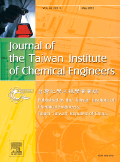
Journal of the Taiwan Institute of Chemical Engineers
Advancing chemical engineering through innovative research.The Journal of the Taiwan Institute of Chemical Engineers is a prestigious publication in the field of chemical engineering and chemistry, published by Elsevier. With an impressive impact factor placing it in the top quartiles (Q1) of both the Chemical Engineering (miscellaneous) and Chemistry (miscellaneous) categories, this journal serves as a vital platform for disseminating cutting-edge research and innovative findings. Since its inception in 2009 and continuing through 2024, it has established a strong reputation with notable Scopus rankings—ranked 40th out of 273 in General Chemical Engineering and 62nd out of 408 in General Chemistry, reflecting the journal’s significance in its field. By offering open access options, the journal ensures that research is readily available to a global audience, fostering collaboration and knowledge exchange among researchers, professionals, and students. The Journal of the Taiwan Institute of Chemical Engineers is dedicated to advancing the discipline of chemical engineering and supporting the development of novel scientific methodologies and applications.